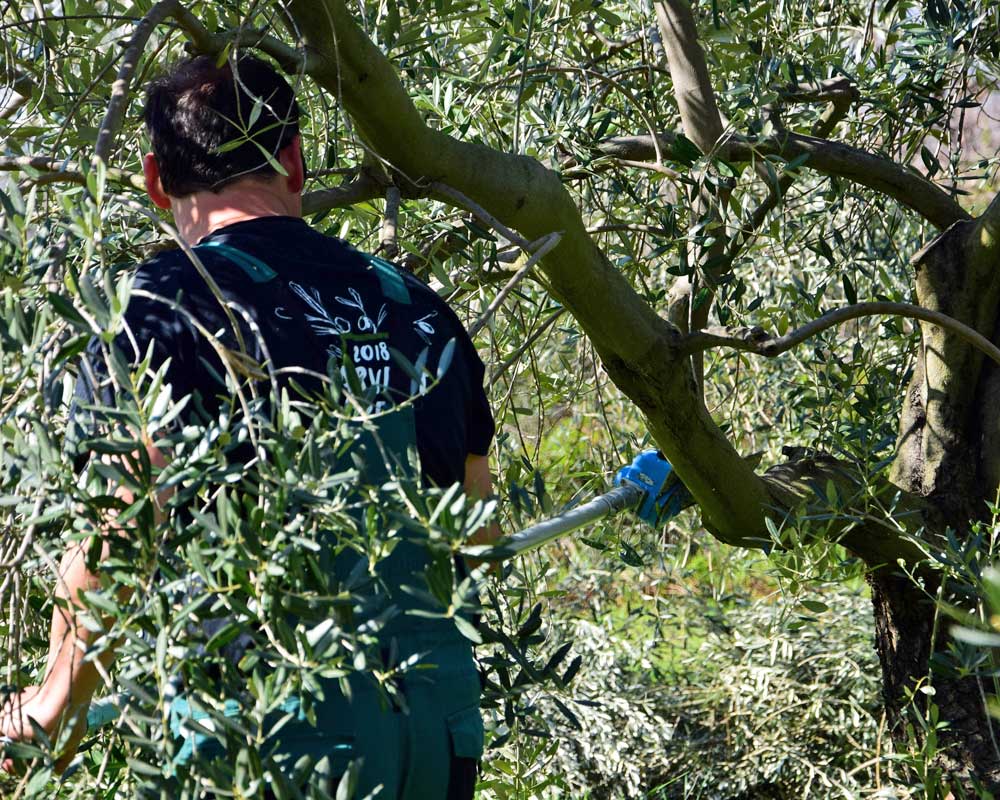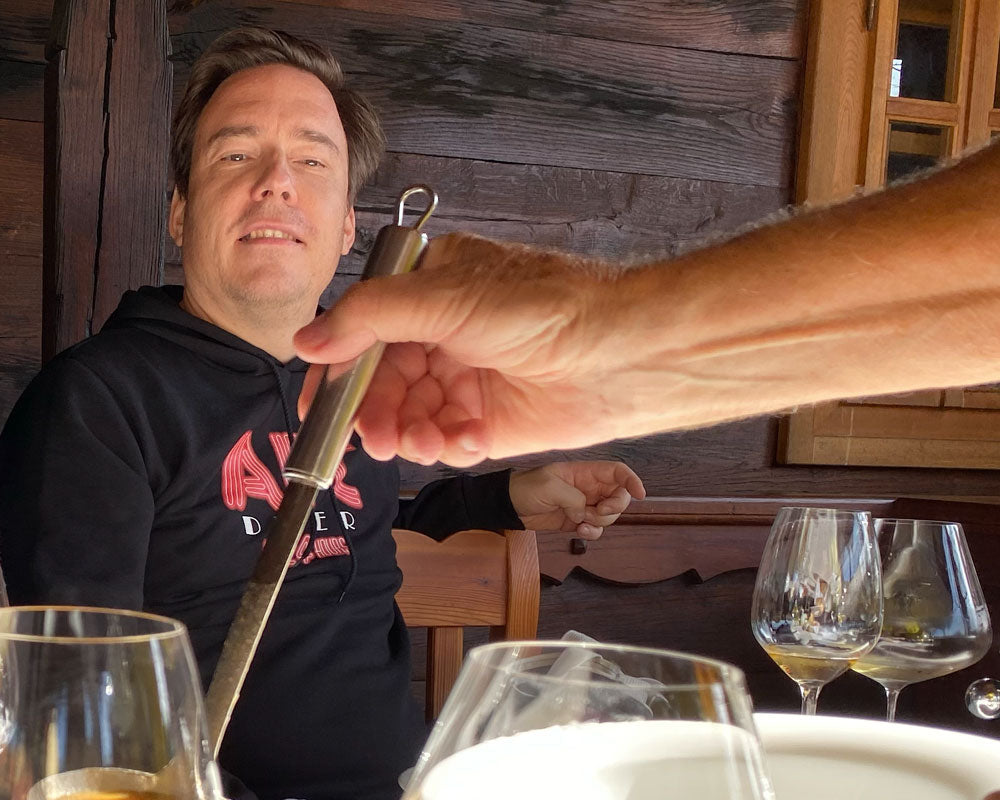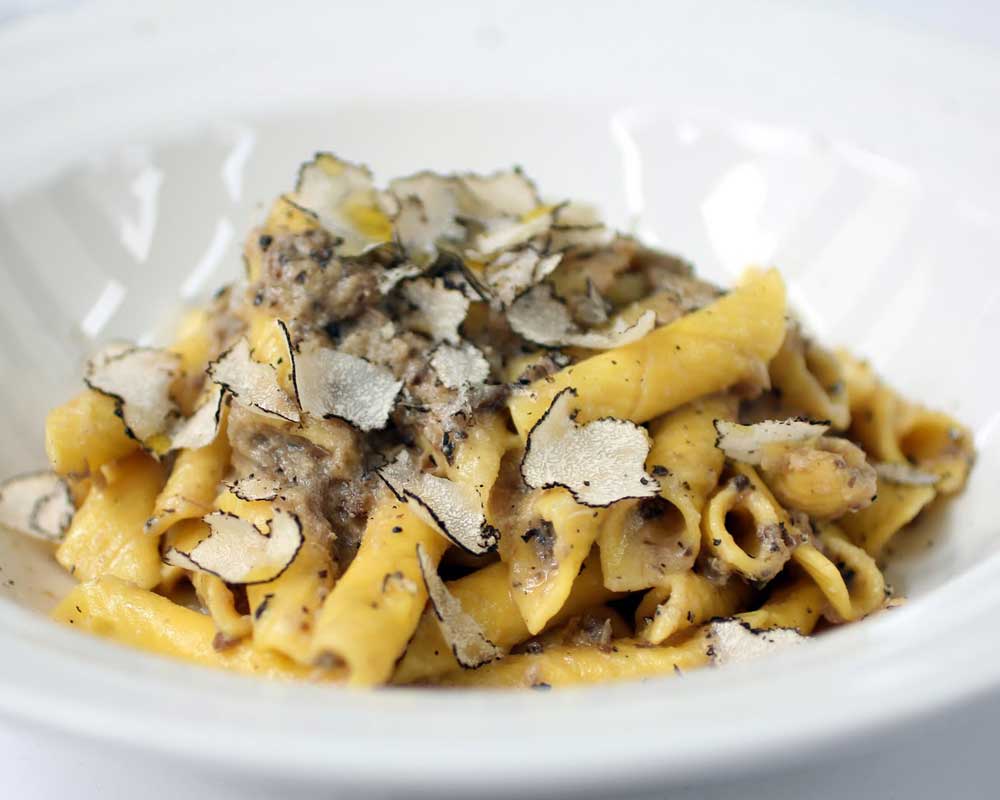In the world of olive oil, it is the harvest and first pressing that usually take all the credit. Those photogenic juices flowing from the press understandably steal the show.
But as Tedi, the sportier of the two Chiavalon brothers, recently explained to us, it is actually pruning that is the unsung hero. It is the most complex, intense and expensive part of olive oil production. The Woz to the harvest’s Steve Jobs, if you like.
Let there be light
The main principle here is simple – light. Letting light into the tree reduces humidity and the chance of diseases. It lets the leaves convert enough energy for healthy fruit to grow. And it makes the tree easier to pick, because branches don’t have to race up in search of the sun.


Sweat the technique
But pruning an olive tree correctly is anything but simple. No machine has been invented that can adequately automate the task. It still takes a highly skilled, highly trained, highly experienced human to do it properly.
Prune too early, and you risk the sap freezing and damaging the tree. If it rains, rot can enter the cuts. If you prune too late, the tree doesn’t have time to put out new growth.
And even within this short window of opportunity, usually March to May, you still have to know how each different variety of olive tree behaves. The Istrian White is naturally upright, while the branches of Pendolino trees droop, requiring different approaches.


Down the rabbit hole
No wonder the elders in Vodnjan, the olive oil capital of Istria, have a saying that personifies their trees. “Fammi povera e ti farò ricco”, roughly translated as “Make me poor and I’ll make you rich”. A selfless act from the first of all trees.
More pruning links to geek out to:
A look at the ancient roots of the olive tree, from Adam to Zeus (Financial Times)
Pruning olive trees is a balance of art, lore and science (Associated Press)
Pruning and Training Systems for Modern Olive Growing (Amazon)






Leave a comment
All comments are moderated before being published.
This site is protected by hCaptcha and the hCaptcha Privacy Policy and Terms of Service apply.